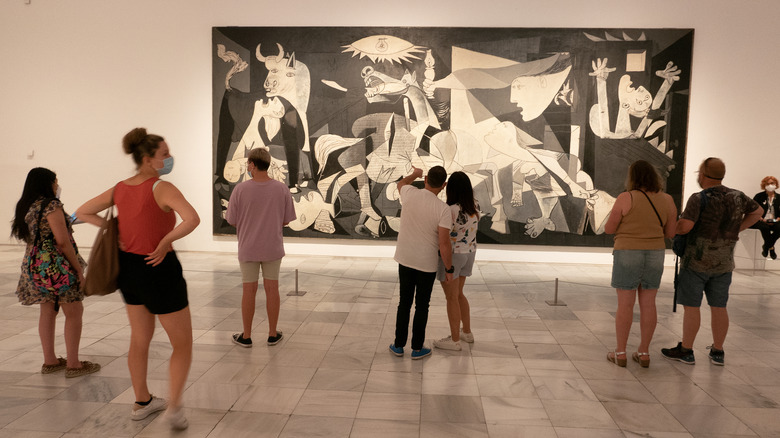Rick Steves' Tip For Getting The Most Out Of Museum Visits In Europe
Europe's museum scene is simply unparalleled. You could spend a lifetime bopping around the continent and still not see it all. Whether you're enamored with paintings, sculptures, historical collections, or religious artifacts, there are priceless treasures on display across capitals and small towns alike. Even better, you don't need to be an art student or historian to appreciate the exhibits. European travel expert, television host, and guidebook author Rick Steves has some excellent advice for enriching your museum trips across the pond.
By his own admission, Steves didn't always appreciate museums, nor could he fathom how anyone could actually enjoy them, he says in an article with Boomer Magazine. In earlier days, trekking around Europe in the 1970s, he only stopped at museums because his mom told him to. A few years later, though, after taking a class in art history, he returned to Europe with a whole new lens. Today, he's such a fan that he spent two years filming museums in numerous countries for his mini-series "Rick Steves' Art of Europe," devoting all of Season 12 to the topic.
Regardless of which museum you visit, Steves suggests making a beeline for the top attractions first. After all, you'll need the most energy to face crowds near masterpieces, like Leonardo da Vinci's "Mona Lisa" in France or Michelangelo's "David" in Italy. If you still have any pep after the highlights, that's when you should fold in a few more exhibits, he says via his blog Rick Steves' Europe.
How to add more context to the experience
Beyond his main tip, a little research ahead of time can elevate your whole experience. After all, museums are the closest tool we have to time travel, Rick Steves told Travel + Leisure. Therefore, it's worth taking the time to scour the museum's website and study the map to know where to concentrate your efforts. While researching the place, learn as much context as you can. After all, anyone can marvel at a painting, but you'll strike vicarious gold if you can connect with details about the artist's life and the story of their work.
To add more depth to your visit, download Steves' free app "Rick Steves' Audio Europe" and tour major attractions like the National Archaeological Museum in Greece, the Vatican Museums in Italy, and the British Museum in the UK. Another free hack is to listen to what nearby tour guides are saying, he says on the blog. Before you leave, take a moment to browse the gift shop and make sure you didn't miss a headliner. The postcard rack often features all the main attractions, explains Steves, so it's best to give it a once-over.
Tips to avoid museum crowds
Some places will have crowds at all times, no matter the season, says Rick Steves on his blog, but not all hope is lost. As soon as you know your trip dates, book reservations for the museums at the top of your list, especially heavy-hitters, like the Picasso Museum in Spain or the Cenacolo Vinciano in Italy, home of Leonardo da Vinci's masterpiece "The Last Supper." A reservation will allow you to skip the queue at the front entrance, even if you still have to wait in line to pass through security.
If you're a fan of self-guided tours, visit the museum as early in the morning or as late in the evening as possible, Steves shares via his blog. Ask when cruise ships and bus tours stop at the museum and avoid those times. It's also worth looking into a pass that could bump you to the front of the line, like a sightseeing package that combines multiple stops around the city. If you have the budget for it, a guided tour is another solid option. It also doesn't hurt to pour over reviews and guidebooks to find insider tips or shortcuts, like the underground entrance to the Louvre, says Steves. And hey, worst case scenario, if the crowds prevent you from seeing every exhibit you had planned, you now have an excellent excuse to head back.


